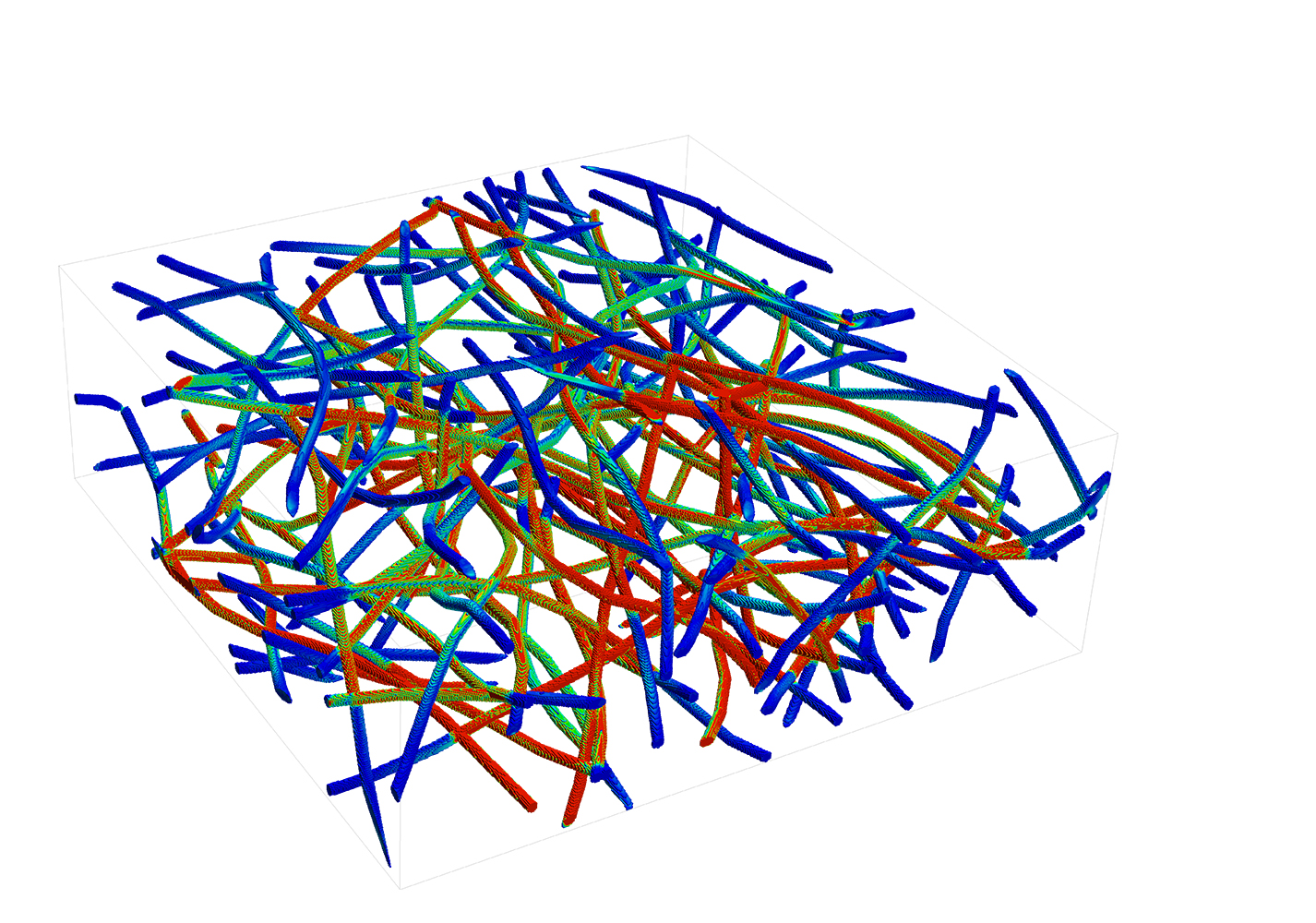Nonwovens are an important component of different products of several uses, e.g. transport of humidity in sanitary products, insulation materials or filters. Nonwovens are usually produced on large engineering facilities. For this, experimental studies of design with regard to the optimization of these nonwoven-structures prove to be very difficult.
Influence Design Parameters
There are so many parameters of design, as for example fibers, surface weight or type of nonwoven bonding and finishing that are affecting the properties of nonwovens. For the change of one single parameter, e.g. the material of fiber, it is necessary to adapt the whole process of fabrication from the spinning of the fibers via their stacking to the nonwoven hardening.
Following the production of such a prototype a time consuming and cost-intensive characterization of the properties of nonwovens carried out experimentally has to be done. Therefore, for this reason detailed studies considering several parameters of design are uneconomic.


